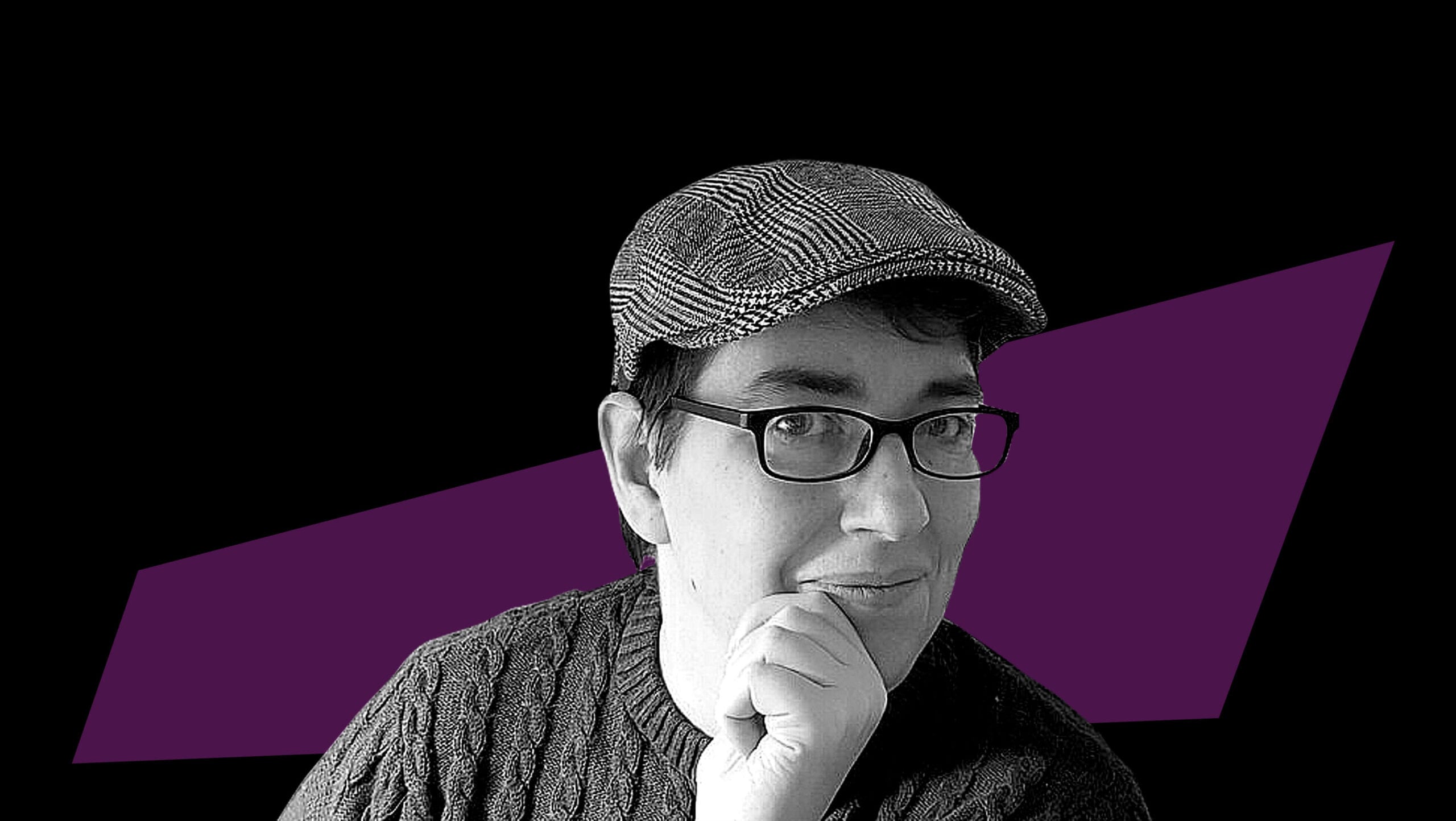As told to Ziya Jones
I used to get upset that people couldn’t see I was a boy. Growing up in the 1980s on Vancouver Island, my gender nonconformity was obvious. My mom used to dress me in skirts and I’d sneak pants out of the house to put on later. All my friends were boys, because I felt more of a kinship with them. I even used to pee standing up. I remember my four-year-old sister mistakenly telling our neighbourhood friends that I was intersex, and that doctors made a mistake by “making me a girl.” That wasn’t true, but we didn’t have the language to talk about trans masculinity. We’d seen intersex kids being discussed on Maury one afternoon, and we figured, “Close enough.”
My parents never provided any clarity. I would get physically punished for any signs of gender nonconformity, so I didn’t feel safe asking them questions. As a young child, I became convinced that the lie my sister and I made up about me being intersex was true. I needed it to be, so that there would be some sort of “normal” explanation for the way I felt.
When I hit puberty and started to have a better understanding of my body, I had to face the fact that I wasn’t intersex. Without this explanation, I started to believe what all the adults around me were saying: There was something wrong with me. After I got my first period, I was in so much distress that I attempted suicide for the first time.
During my adolescence, my mother struggled with mental health issues and alcoholism and would kick me out of the house when we got into fights. One evening, out of nowhere, she started yelling that I’d stolen money from her. I had no idea what she was talking about, but she wouldn’t listen to my denials. She gave me an ultimatum: accept punishment or get out. I left. At age 15, I was homeless.
I started to sleep on the street or hop from friend’s house to friend’s house, all while continuing to go to school. But about six months into my homelessness, I was sexually assaulted by someone I was crashing with. I felt unsafe on my own, but I felt I couldn’t go back home, either; eventually, a friend’s foster parents worked with a social worker to put me into foster care.
One condition of being in care was that I attend regular therapy. I was grateful: I was carrying a lot of trauma, and I still felt a lot of confusion about my gender. A therapist, I thought, would help me deal with my pain and help me feel safe.
“The therapist offered a solution: work through your trauma and you’ll be a normal girl”
I showed up to my first session feeling hopeful. For the first few weeks, my therapist tried really hard to earn my trust. Being in his office made me feel trapped, so he’d meet me on a bench in the park across from his office to talk. He became one of the few adults I trusted. Two months into our sessions, I broke down and told him that I was a boy. He was quiet for a moment. His face stayed neutral but you could tell the gears were turning in his head. When he finally spoke, he told me we should revisit the subject later. In future sessions, he explained that my masculinity was rooted in trauma—I’d internalized misogyny so much that I hated femininity, other women and, ultimately, myself. If I could work through my trauma, he said, I could settle into a happy life as a girl.
In a way, what he was saying made sense: I did hate myself. I felt suicidal and wanted to feel loved and accepted. He offered a solution: work through your trauma and you’ll be a normal girl.
The therapist gave me a copy of The Courage to Heal, an exercise book often given to girls who have survived childhood sexual abuse. (This book would eventually be criticized for the author’s lack of qualifications and for creating false memories of satanic ritual abuse in children.) In the evenings, I’d work diligently through all the exercises my therapist had assigned me in order to “get me in touch with my ‘womanhood.’” Despite my initial enthusiasm, I hated it. I was asked to do a bunch of mindfulness exercises, but being present in my body made me want to claw out of my skin.
Every few weeks, my therapist would ask me how I was feeling about my body, and I’d have to admit I still felt dysphoric. When I did, he would guilt me, questioning why I let myself continue to be so misogynistic. I felt like I was failing. I so deeply wanted to please the adults in my life, but I couldn’t. The more I “failed,” the more depressed I got. What was so deeply broken inside me that I couldn’t accept myself? What was I doing wrong?
A year and a half into my therapy, my group foster home shut down. I went back to being street-involved, and I lost access to my therapist. In some ways, it was a relief: There was one fewer person policing my body and my gender presentation. But it also meant that I had no support dealing with the fallout of my so-called “therapy.”
I threw myself into an excruciating period of trying to dress and behave hyper-femininely. I had absolutely no self-worth. I ended up in abusive relationship after abusive relationship because I legitimately believed I deserved to be treated badly.
“One of my school textbooks had a section on trans people, which was where I learned about transness for the first time”
In my mid-20s, I decided it was time to go back to school and enrolled in a university psychology program. One of the textbooks had a section on trans people, which was where I learned about transness for the first time—in my 20s!
Soon after, I consulted the DSM, the American Psychiatric Association’s bible on mental health, and saw that a condition for being trans, according to the medical literature at the time, was that people had to feel dysphoria about their genitals. Since that didn’t resonate with me, I felt like a fraud. Everything my therapist had said stuck with me. I was convinced that my masculinity was a pathology, and one that I was failing repeatedly to fix. I continued to struggle with internalized transphobia for nearly two more decades.
Society punishes trans women for displaying any sign of femininity and rates of violence against trans women are high. People will accept masculine traits in people assigned female at birth, but you have to identify as female. There’s a line. If you cross it and say, “I’m actually a man,” then the message is, “How dare you try to take a privilege that doesn’t belong to you?” I bought into it.
By my late 20s, I finally started to work up the courage to come out to close friends and partners. But almost every time, I was met with anger or disgust or violence, and I retreated into the closet. I had two kids by then, and raising them took priority over navigating my gender identity. That cycle continued until 2011, when, at 35, I came out to my current partner. He was the first boyfriend to accept me, and his support and love helped me come out publicly and change my name and gender marker. Last year, we updated our marriage certificate with my proper gender marker, and our relationship was recognized legally as a same-sex marriage.
My kids are young adults now and I’m thankful they live in a slightly more open world. When they were in high school, I worked with their school board and consulted on how to make curriculums and schools more trans-inclusive. I’m so glad that some Canadian kids get to learn about transness as early as elementary school. If I’d understood that I could be trans earlier in life, it would have prevented a lot of confusion, fear and shame. And if I would have had access to caring adults who affirmed my gender instead of actively denying it, I wouldn’t have wasted decades trying to fix something that was never broken in the first place. I could have focused on healing from my legitimate traumas. Conversion therapy stole that from me.
I was in “treatment” two decades ago, but the same tactics are used on trans youth today, both in and outside of therapists’ offices. Trans-exclusionary radical feminists have co-opted the messaging I got from my therapists—high-profile TERFs like Meghan Murphy will talk at length about how young trans men are transitioning in droves to escape their own internalized misogyny. They’re supported publicly by psychiatrists who are willing to back this rhetoric, despite the fact that studies have shown youth are much more likely to thrive when their gender is affirmed, and countless psychological organizations advocate for affirming care for trans youth.
“A practitioner doesn’t have to explicitly say, “You need stop being trans” in order to perform conversion therapy. The coercion can be subtle”
In 2017, I joined Jagmeet Singh’s team as he was running to be leader of the federal NDP, and worked on writing the party’s LGBTQ2 policies. While I was there, I encouraged the party to push for a federal conversion therapy ban. A lot of my work centred around explaining what conversion therapy looks like today, especially for trans people. Lots of politicians will say, “The government doesn’t pay for that anymore.” But a practitioner doesn’t have to explicitly say, “You need stop being trans” in order to perform conversion therapy. The coercion can be subtle, like what I experienced.
On Oct. 1, the federal government tabled Bill C-6, which would amend the Criminal Code and make it illegal to provide unwanted conversion therapy to LGBTQ2 folks. As is, the bill leaves the door open to adults voluntarily seeking reparative therapy. It also still allows therapists to offer their “opinions” about a person’s gender or sexuality and influence their “treatment” without repercussions. It seems the government does not understand that conversion therapy is not limited to religious settings. If we really want to protect Canadians—especially kids—we need to start by making sure none of them ever go through what I did.


 Why you can trust Xtra
Why you can trust Xtra


